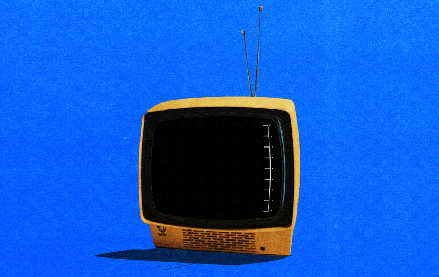Future of TV Briefing: Upfront ad buyers debate the value of out-of-home viewership

This Future of TV Briefing covers the latest in streaming and TV for Digiday+ members and is distributed over email every Wednesday at 10 a.m. ET. More from the series →
This week’s Future of TV Briefing looks at the question of how TV and streaming audiences watching in a bar or other public places should be counted — and, more importantly, charged for — compared to people watching at home.
- Counting the crowd noise
- Let’s talk CTV in NYC
- Streaming overtakes all TV watch time
- Disney & NBCU vs. Midjourney, WNBA + Scripps, Amazon’s ad load and more
Counting the crowd noise
If someone goes to a bar to watch NBA Finals Game 6 on Thursday, should an advertiser pay as much to reach them as if that person were watching at home? Even if that person is as likely to be staring down their drink as looking up at the screen when an ad airs?
These are becoming bigger and bigger questions in this year’s TV and streaming upfront advertising market. And a bigger and bigger point of contention for agency executives, with Nielsen having updated its methodology for counting out-of-home TV viewers – i.e. people watching in bars, restaurants, hotels, etc. – to account for what the measurement provider claims is now 100% of U.S. TV viewers.
“They changed the out-of-home methodology, and in live sports, out-of-home can have a big impact because you’re likely to watch at a bar. But out-of-home is not as effective if someone’s at a bar turning out during commercials,” said an agency executive.
To be clear, ad buyers have been upset about how out-of-home audiences have counted toward their TV ad buys since Nielsen added OOH viewership to its national TV currency in 2020. And it didn’t help when Nielsen admitted in 2021 that it had actually been undercounting OOH viewers for the entirety of that first year. And now it’s not necessarily helping that Nielsen’s new methodology means TV networks and streaming services will be able to claim larger audiences and, as a result, demand more money from advertisers.
The central issue for agency executives is the same one dogging the broader measurement currency discussions in this year’s upfront market: If advertisers had already been reaching these audiences, why should they pay more just because they can be counted now?
“These people have been watching all along, so to charge the same or more for [the new OOH viewership counts], that’s going to have an impact on spending decisions,” said a second agency executive.
There are also concerns about how reliable the new counts are, given Nielsen’s recent history of measurement errors, including the very recent one that Ad Age reported on last month. “We’ve had some concerns around some of the early numbers. We think that some of the numbers look too high, especially on certain programming that shouldn’t really be impacted by out-of-home viewing. So we raised those concerns a few months ago; they’ve listened to us,” said a third agency executive.
And it’s not like agency executives are opposed to OOH audiences being counted and being counted in full. An OOH viewer may be even more valuable to an advertiser if someone is watching a game with a group of friends, an ad comes on and the entire group reacts to the ad and starts discussing it.
“Sometimes the fact that you’ve got people engaged watching a program with you, they may be commenting on an ad [and] that may be reinforcing your purchase decision. But in other situations, it could be detracted because you might not actually be paying attention to the ad,” said the third agency executive.
Which is why the primary concern revolves around how these numbers should affect how much advertisers pay for impressions. Which boils down to what’s the value of reaching someone watching in a bar et. al vs. reaching that person at home.
“Right now they’re valued equally. But at some point, we have to understand what is that value for those [OOH] impressions,” said a fourth agency executive.
For example, ad buyers are looking for insights into the specific setting that an OOH viewer may have been exposed to an ad, such as if in a noisy pub with a single TV screen or while walking past an airport bar.
“What was the engagement? What was the actual attention like? Those are things we still have to reconcile: what that value of audience is from out-of-home,” said the fourth agency executive.
Once that value comparison can be assessed, the question then becomes how to reflect that in how ads are priced. Which is not yet part of the upfront conversation.
“As of now, that has not really been a discussion that out-of-home impressions would be counted at or priced at a different level than in-home,” said Jimmy Schaaf, vp of national video investment, Canvas Worldwide.
“We still have a little bit more work to do there on how it’s being priced and planned,” said the fourth agency executive.
While not yet part of the upfront conversation, pricing differences between in-home and out-of-home audiences have been established in the CTV ad market.
There are companies that buy OOH inventory from pay-TV providers, such as satellite TV providers selling subscriptions to bars, restaurants, etc., and then resell that inventory at a discount to advertisers. This inventory can be purchased for up to $20 per thousand impressions, which can be less than half the standard CPM, said Skyler McGill, head of video & programmatic at Wpromote.
“I do think that from a pricing standpoint, it’s making it a little bit more competitive for other streaming networks because it’s generally more comparable to [traditional] out-of-home pricing [like billboards and bus stop signage], like $8 to $10 from a CPM standpoint for some of the content,” said McGill. He added, “That’s interesting, right? Because you have an opportunity now to reach a potential customer during a time that could be incredibly expensive if you’re buying via linear.”
What we’ve heard
“Long-form monetization is 100 percent better; it’s more consistent. With Shorts, you get a peak, and then it falls off. You get paid x amount of money for those days, and it’s great — but it makes it so you have to keep posting frequently.”
— YouTube creator Zachery “ZachTheBold” Renauldo
Let’s talk CTV in NYC
Are you tired of talking about CTV advertising? No? Me neither. Which is why I’m psyched to bring together a bunch of my favorite buy-side executives to talk about the state of the CTV ad market next month in New York City for the Digiday CTV Advertising Strategies event on July 15 (I’m less stoked about leaving southern California in mid-July for hot and humid NYC, but that’s another thing).
Anyway, come hang out and hear how top executives from brands and agencies – including Amica Insurance, Danone, Horizon Media and UM Worldwide – are navigating the opportunities and challenges in today’s CTV ad market and what they say it will take for streaming to overtake the TV once and for all. Plus we’ll be hosting a behind-closed-doors, no-holds-barred town hall session, which is always my favorite part of Digiday events. Click here to attend.
Numbers to know
>50%: Percentage share of time that the average YouTube viewer spends watching videos that are more than 20 minutes long.
490,000: The equivalent number of full-time jobs in the U.S. that YouTube’s creator ecosystem supported in 2024.
Streaming overtakes all TV watch time
May marks the latest high-water mark in streaming’s overtaking of traditional TV. Last month people spent more time watching streaming on TV screens than broadcast or cable TV combined, according to Nielsen’s latest The Gauge viewership report.

Funnily enough, while streaming overall recorded its momentous change to date, the share of watch time among streaming services stayed fairly stagnant in May — with one big exception. NBCUniversal’s Peacock lost a full percentage point in its TV watch time share from April to May.

What we’ve covered
Disney adds Amazon to its DRAX partnership roster:
- Advertisers will be able to use Amazon’s DSP to buy ads through Disney’s ad exchange.
- Amazon is the third DSP, alongside Google and The Trade Desk, with access to DRAX.
Read more about Disney-Amazon here.
Amazon and Roku kick off Cannes Lions with DSP tie-up:
- Roku is opening up its CTV platform’s ad inventory to Amazon’s programmatic ad-buying tool.
- The companies claim the tie-up will let advertisers reach 80 million U.S. households.
Read more about Amazon-Roku here.
Omnicom strikes partnerships at Cannes Lions with Disney and Walmart around harnessing live:
- Omnicom will use The Trade Desk to buy Disney’s live sports ad inventory programmatically.
- Disney started selling ads in live sports programmatically last year.
Read more about Omnicom’s Disney deal here.
YouTube steps up Shorts creator monetization:
- YouTube has signed deals with third-party vendors to connect Shorts creators with brands.
- The deals do not replace YouTube’s own creator-brand matchmaking tool BrandConnect.
Read more about YouTube Shorts here.
What we’re reading
Disney/NBCUniversal vs. Midjourney:
The media conglomerates are suing the generative AI company for allegedly violating copyright law with its AI-generated image technology, according to Axios.
The e-commerce giant has increased the amount of ads it airs per hour of programming to up to six minutes’ worth, according to Adweek.
The sports league and TV network owner have renewed their TV and streaming rights deals for Friday night WNBA games, according to CNBC.
TikTok’s AI-generated “influencer” ads:
The social video platform is adding new tools for advertisers to create video ads using generative AI that resemble the sponsored posts that human creators upload, according to The Verge.
Influencers’ hold on ad dollars:
Marketers may be moving money away from traditional media like TV, but they’re throwing more dollars at the creator economy, according to Bloomberg.
Want to discuss this with our editors and members? Join here, or log in if you're already a member.
More in Future of TV

‘A year of loose ends’: Digiday editors share top takeaways from 2025
This year was filled with major developments – from Netflix’s planned WBD deal to Omnicom’s acquisition of IPG to Google’s ultimately cookie reversal – and Digiday editors Sara Jerde and Seb Joseph help to recap the year that was (and wasn’t).

Future of TV Briefing: How the future of TV shaped up in 2025
This week’s Future of TV Briefing looks back at the top topics and trends that overtook the TV, streaming and digital video industries in 2025.

Programmatic agency execs speak out on CTV transparency
At the recent Digiday Programmatic Marketing Summit, agency executives spoke out — on stage and in behind-closed-door town hall sessions — on how they see transparency in CTV.








